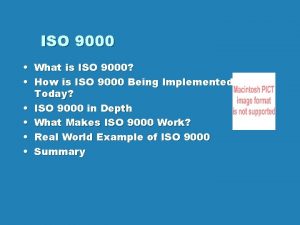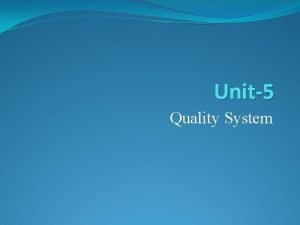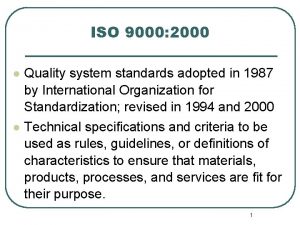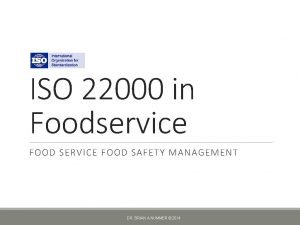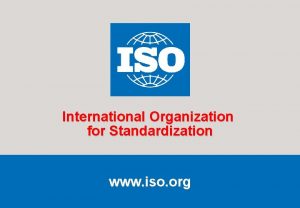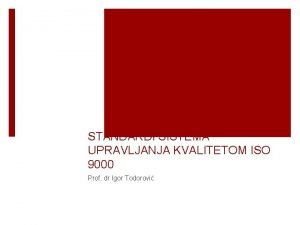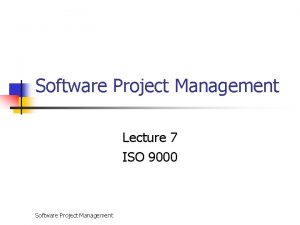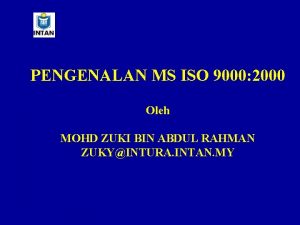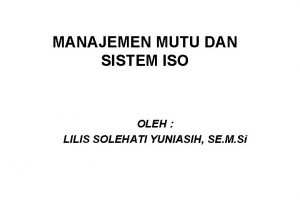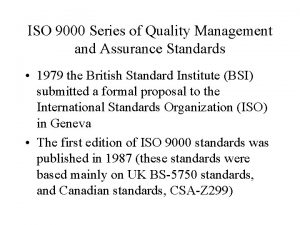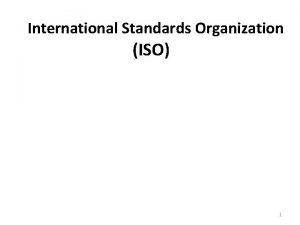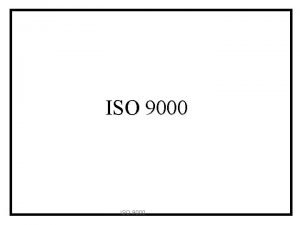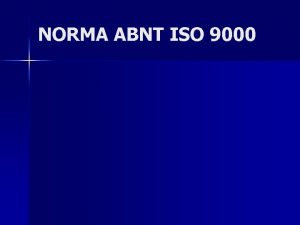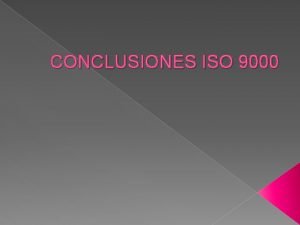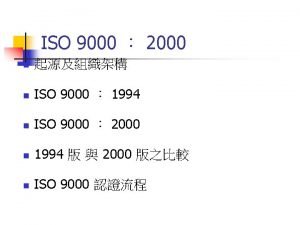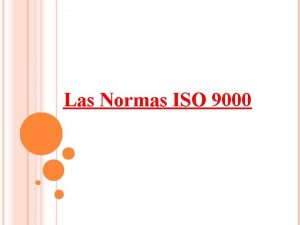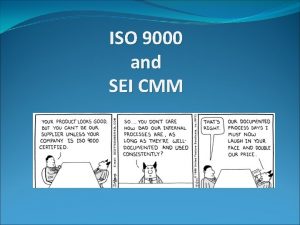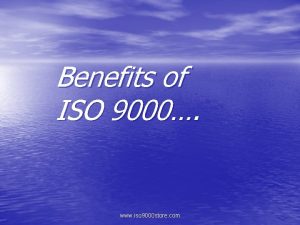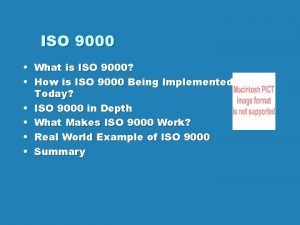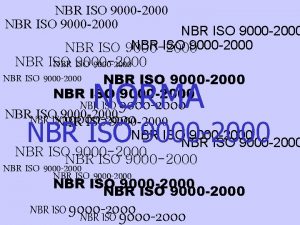International Standards Organization ISO 1 ISO 9000 ISO













- Slides: 13

International Standards Organization (ISO) 1

ISO 9000 • ISO (International Standards Organization): – a consortium of 63 countries established to formulate and foster standardization. • ISO published its 9000 series of standards in 1987. 2

1. ISO 9000 • A set of guidelines for the production process. – not directly concerned about the product it self. – a series of three standards: • ISO 9001, ISO 9002, and ISO 9003. 3

ISO 9000 Cont. . . • Based on the premise: –if a proper process is followed for production: • good quality products are bound to follow. 4

1. 1. ISO 9001 • Applies to: – organizations engaged in design, development, production, and servicing of goods. – applicable to most software development organizations. 5

1. 2. ISO 9002 • ISO 9002 applies to: – organizations who do not design products: • but are only involved in production. • Examples of this category of industries: – steel or car manufacturing industries – buy the product and plant designs from external sources: • only manufacture products. – not applicable to software development organizations. 6

1. 3. ISO 9003 • ISO 9003 applies to: – organizations involved only in installation and testing of the products. 7

2. ISO 9000 for Software Industry • ISO 9000 is a generic standard: – applicable to many industries, • starting from a steel manufacturing industry to a service rendering company. • Many clauses of ISO 9000 documents: – use generic terminologies – very difficult to interpret them in the context of software organizations. 8

2. 1. Software vs. other industries • Very difficult to interpret many clauses for software industry: – software development is radically different from development of other products. 9

Software vs. other industries Cont. . . • Software is intangible – therefore difficult to control. • It is difficult to control anything that we cannot see and feel. – In contrast, in a car manufacturing unit: • we can see a product being developed through stages such as fitting engine, fitting doors, etc. • one can accurately tell about the status of the product at any time. – Software project management is an altogether different ball game. 10

Software vs. other industries Cont. . . • During software development: – the only raw material consumed is data. • For any other product development: – Lot of raw materials consumed • e. g. Steel industry consumes large volumes of iron ore, coal, limestone, etc. • ISO 9000 standards have many clauses corresponding to raw material control. • not relevant to software organizations. 11

Software vs. other industries Cont. . . • Radical differences exist between software and other product development, – difficult to interpret various clauses of the original ISO standard in the context of software industry. 12

3. ISO 9000 Part-3 • ISO released a separate document called ISO 9000 part-3 in 1991 – to help interpret the ISO standard for software industry. • At present, – official guidance is inadequate 13
